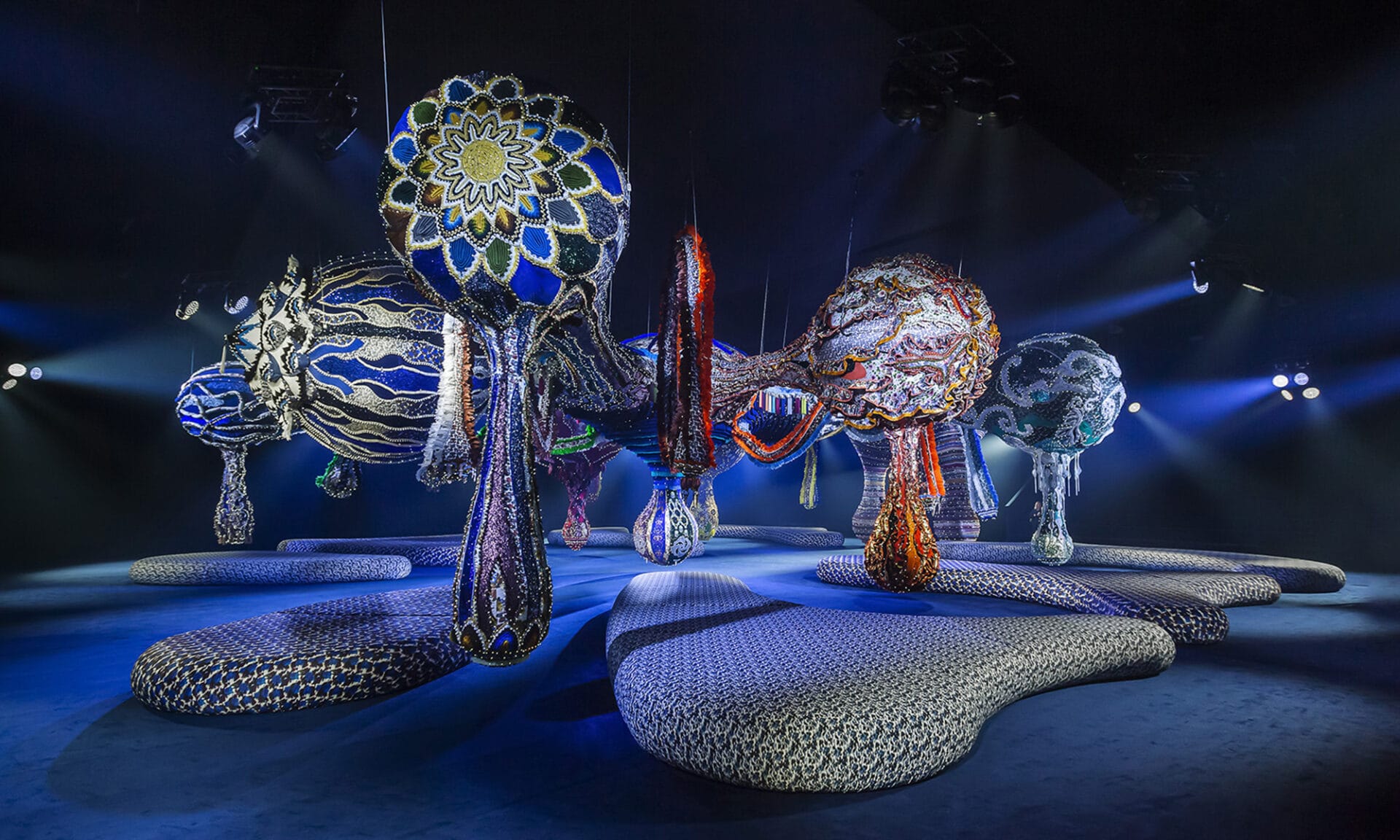This post was originally published on Colossal
Valkyrie Miss Dior at the Dior Autumn-Winter 2023-2024 Women Ready-to-Wear show on February 28, 2023. Photo © Lionel Balteiro, courtesy of Atelier Joana Vasconcelos
When you decide to buy something, there are many key factors involved. Customer experience has become one of the most relevant aspects to consider when designing a retail journey, whether physical, digital, or both. It’s time to define how retail spaces will evolve in the next years and to do so, Istituto Europeo di Design (IED) Firenze just launched a brand-new Master Course in Future Store Design.
In an era marked by rapid change, the course imparts essential knowledge and the skills required to design effective retail spaces, recognizing the profound shifts in this domain. The dynamic interplay between physical and digital has become increasingly integral to our daily lives. Traditional brick-and-mortar stores now serve as focal points for hybrid experiences, seamlessly integrating online and offline elements through omnichannel services.

Portrait of Joana Vasconcelos at Exposição “Extravagâncias,” Museu Oscar Niemeyer in Curitiba, Brasil. Photo © Lionel Balteiro for Atelier Joana Vasconcelos
Delivered entirely in English, the Master Course features celebrated Portuguese artist Joana Vasconcelos as a Mentor. With more than three decades of experience and a diverse portfolio spanning monumental sculptures and immersive installations, she brings a wealth of expertise to the program. Having exhibited in several prestigious venues worldwide, including at the Uffizi Galleries and Pitti Palace in Florence, Vasconcelos’s international acclaim underscores the caliber of mentorship students can anticipate. Characterized by the recontextualization of everyday objects and a penchant for challenging societal norms with wit and irony, her distinctive perspective promises to enrich students’ educational journeys.
Geared toward postgraduate students proficient in design elements with creative and visual skills, the Master Course in Future Store Design seeks to redefine the future of retail spaces. With an ambitious mission to equip a new generation of designers with a keen focus on future trends and the challenges posed by innovation, this program at IED Firenze cultivates ideas that resonate with market demands and caters to the evolving needs of brands and consumers.
Mentors like Vasconcelos play a pivotal role in guiding students through the ever-evolving challenges of the industry. By sharing their expertise and insights, they prepare students for the competitive landscape awaiting them upon course completion. Coordinators Imma Matera and Tommaso Lucarini, founders of the design studio Tipstudio, ensure a seamless learning experience by leveraging their expertise and extensive network within the design industry.

Project by A. Valente and J. Ratanawijit, in collaboration with Adidas. Image courtesy of IED Firenze
With a specialized focus on the customer experience, students will gain an understanding of the importance of materials to generate sensorial exchange or immersive installations to create immediate connections. Now that the boundaries between functionality and aesthetics are blurred, technology and craftsmanship must join hands in these future spaces to respond to consumer expectations. As such, Florence is an ideal setting for this course, with Vasconcelos and Tipstudio Studio well-suited as its leaders.
The Master Course in Future Store Design at IED Firenze represents a new opportunity for aspiring designers to learn from industry luminaries and shape the future of retail environments. With a curriculum designed to foster creativity, innovation, and critical thinking, graduates will be well-equipped to make significant contributions to the ever-evolving realm of design.
For more information, visit ied.edu.

IED Firenze. Photo by Federica Fioravanti

IED Firenze. Photo by Stefano Casati
Do stories and artists like this matter to you? Become a Colossal Member today and support independent arts publishing for as little as $5 per month. The article IED Firenze Launches a New Master Course in Future Store Design appeared first on Colossal.





0 Comments